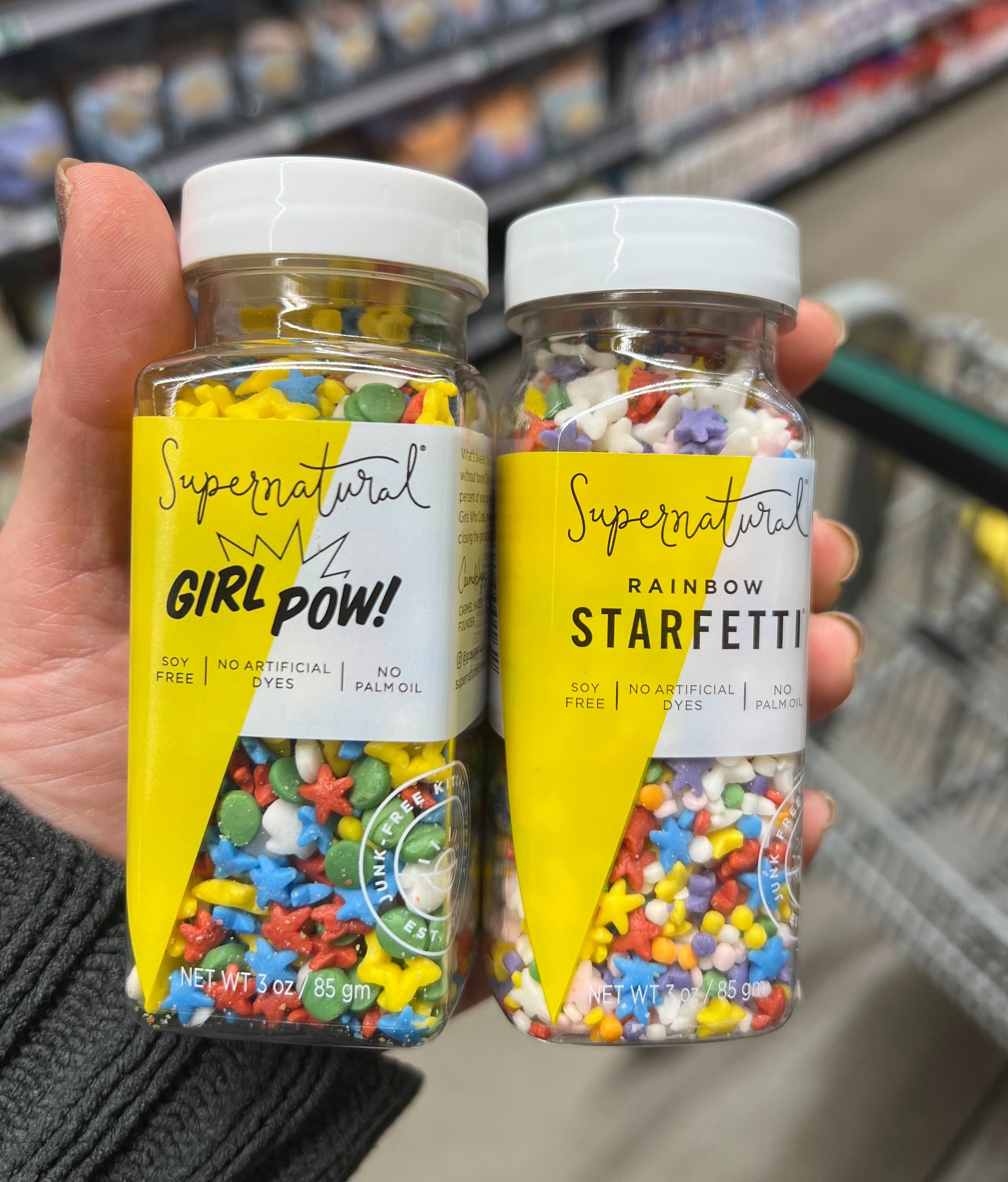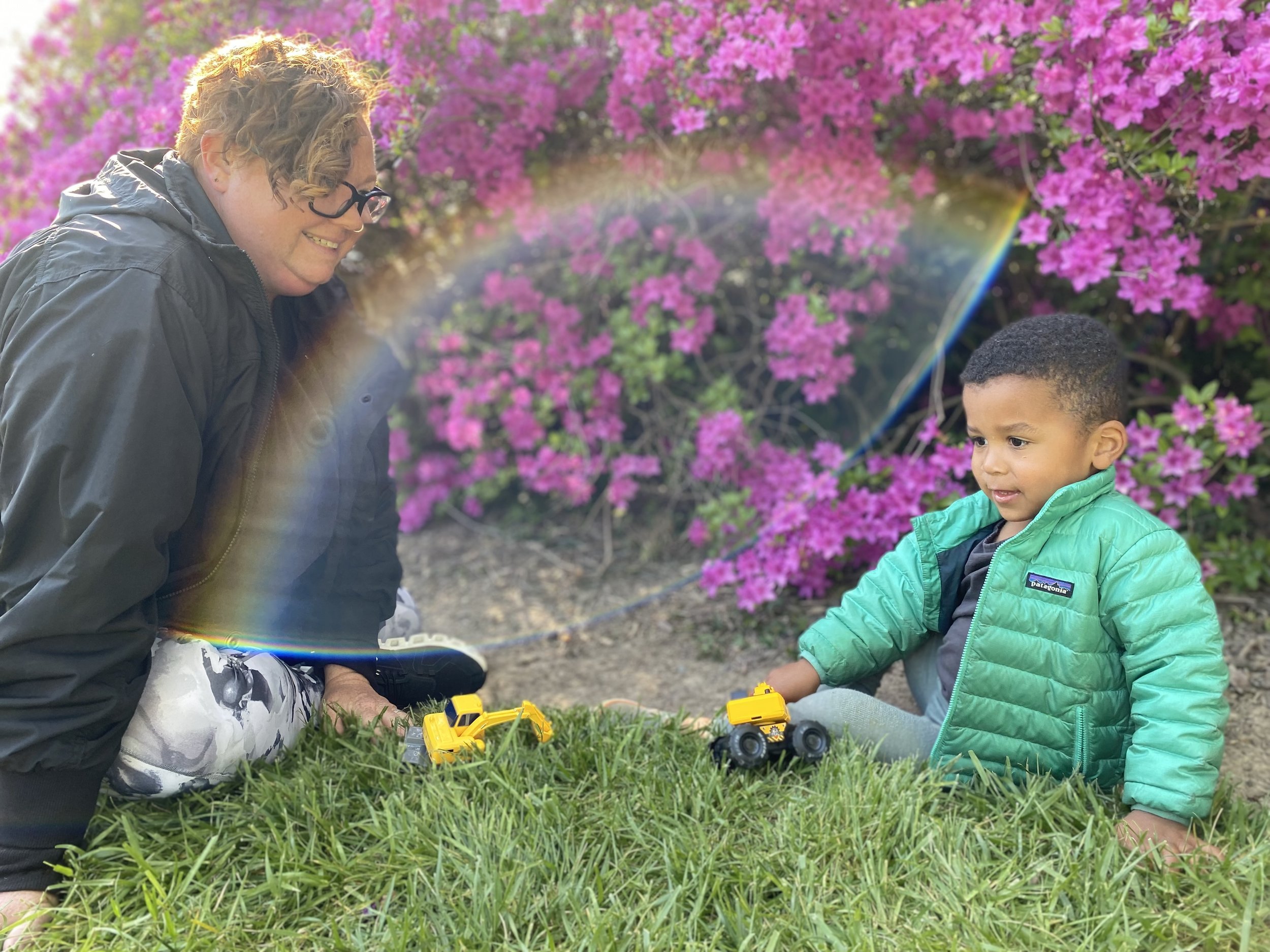Do Food Dyes Really Make Kids Hyper?
I hadn’t spent much time fretting about dyes in food, but as a mom of two rambunctious boys that’s started to change.
With kids, it seems like one holiday rolls into the next and each brings its own set of technicolored goodies. Christmas is full of red and green treats, then valentine’s day with all things pink, rainbow and green foods are fun for St Patty’s day and before you know it a basket of pastel goodies show up for Easter. I love it all—I’m a real sucker for a holiday themed cookie. It’s a lot of fun, a lot of nostalgia and a lot of dye.
So I found myself trying to get to the bottom of this question: do food dyes really cause behavior change in kids?
Background:
Since the 1950’s, food dye consumption increased 500% in the US with kids being the largest consumers.
Many “kid foods” are colored brightly to make them more appealing to little ones. One study found that food dyes are in 43% of foods marketed to kids.
If you start looking on labels, you might be surprised how many foods have color added. These dyes are not only found in highly processed treats but in everyday foods like salmon, pickles and bread. Even some oranges are dipped in dye to brighten the color of their peel.
Types of Food Dyes:
Foods are dyed with either natural or artificial dye
Natural dyes are derived from natural sources such as beet, carrot, turmeric and spirulina. Other natural colors might come from flowers, tree bark or even bugs!
In recent years, the use of natural dyes has increased substantially with increased consumer demand. Some major food manufactures have committed to replacing artificial dyes. Kraft Mac & Cheese famously removed artificial dyes and added paprika and turmeric for color instead.
Natural food dyes and sprinkles at Whole Foods
Artificial dyes have been around since the 1850’s and are derived from petroleum (yum!). Some artificial dyes previously used to color foods have been deemed unsafe and discontinued. Artificial dyes are commonly used in children’s medicine as well.
Today there are 7 artificial food colorings approved for widespread use in the US:
Brilliant blue (Blue No. 1b)
Indigotine (Blue No. 2)
Fast green (Green No. 3)
Tartrazine (Yellow No. 5)
Sunset yellow (Yellow No. 6)
Erythrosine (Red No. 3)
Allura red (Red No. 40)
Natural dyes are generally considered safe. The debate about food dyes and safety focuses on the use of artificial dyes.
Food Dyes Vary By Country
Because the data on safety is limited or inconclusive, food dyes that are permitted vary from country to country. There are food dyes allowed in the US that are banned in Europe (Green No 3) and visa versa.
Foods that are colored with artificial coloring in the US may be colored with natural substances elsewhere. Europe uses carrot and pumpkin extract to color Fanta soda and actual strawberries to color McDonalds milkshakes. In the US, these products have artificial food colorings added.
Is Hyperactivity From Dyes a Legitimate Concern?
The concern for food dyes causing hyperactivity was first popularized in the 1970’s by a pediatric allergist. He created an elimination diet for hyperactivity which restricted dye, food additives, BHA and salicylate (found in aspirin). Despite there being no great evidence on this at the time, the concept caught on with parents across the US forming a small but vocal network of believers.
…Since then, researchers have tried to prove (or disprove) the link with dye and behavioral changes.
Many, many studies have been carried out on artificial food dyes and children. Unfortunately they are limited by small sample size, observer bias (especially parents), and selection bias (picking kids who seem sensitive to start with).
A 2004 meta-analysis of 15 double-blinded, placebo-controlled studies reported that they found an effect only when parents were the ones reporting on behaviors but not when teachers or unrelated observers were used.
A compelling study came out of the UK in 2007. It was a randomized, double-blinded, placebo-controlled study:
300 British kids age 3 or 8/9 years old were given juice containing various artificial dyes and the preservative sodium benzoate or juice containing no dyes. Parents and teachers then evaluated for hyperactivity without knowing if dyes had been consumed or not. Both groups showed an increase in hyperactivity following dye consumption compared to the placebo.
A 2012 meta-analysis looked at the role of food dyes and ADHD. They found mixed conclusions but did feel that restrictive diets might be helpful in managing some cases of ADHD. They concluded that about 8% of kids with ADHD have symptoms influenced by food coloring.
How Regulators Interpret The Data:
In 2011, the FDA reviewed the data on dyes and behavioral change (and re-reviewed it in 2019). In the end the expert panel voted 6 in favor vs 8 against placing a warning label on foods containing artificial dyes. The split vote shows that even the experts in this area are divided on if these dyes pose a substantial risk.
The European Union, on the other hand, does require a warning label on foods containing 6 food dyes which says that the dye “may have an adverse effect on activity and attention in children”.
What’s A Parent To Do?
The body of evidence seems too weak to draw broad conclusions but it is still compelling and hard to discount completely. Most likely, there is a small subset of kids who are sensitive to the effect but when you mix these kids into a large study, the effect is diluted and all but disappears.
Many parents today continue to swear that food dyes (particularly Red No 40) change the behavior of their children. A friend told me “I don’t care if the studies are inconclusive. I’ve seen my kid and that’s all the data I need.”
In the end, parents who know their kids better than anyone else have to make the call that works for their family.
How We Are Approaching This In Our Home:
I have not seen a link in my kids behavior and dye intake. However it’s hard to really say since my kids are consuming food dyes mostly in situations that are stimulating to start with (exciting parties or holidays, fun novel sweets, caffeine from chocolate, etc).
After researching this topic, I chose to go through our pantry/fridge to see which diet staples we eat regularly that contain artificial dyes. I then decided which items I wanted to look for alternative brands without dyes.
Artificial dyes showed up the most in our spice cabinet in blends like lemon pepper and bouillon cubes. I was also taken by how many foods I found in our home that use natural dyes such as ketchup, mustard, colored pasta and cheddar cheese.
When it comes to parties and special occasion foods, I’m not going to try to restrict dyes based on a limited effect in my own kids. If I had a kid who appeared more sensitive to dyes or struggled with hyperactivity and attention to start with, I might find ways to minimize dyes even for special occasions.
Hopefully food producers continue to use more natural dyes and less artificial ones so that parents don’t have to weigh the risks of artificial dyes and restricting foods in their kids’ diet.






